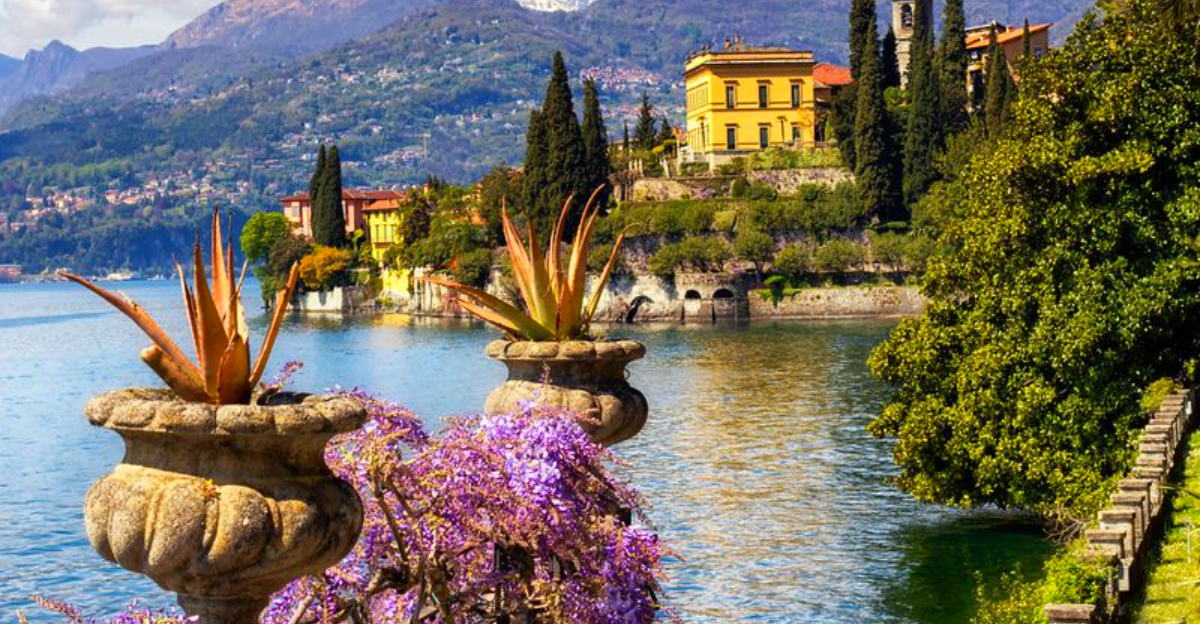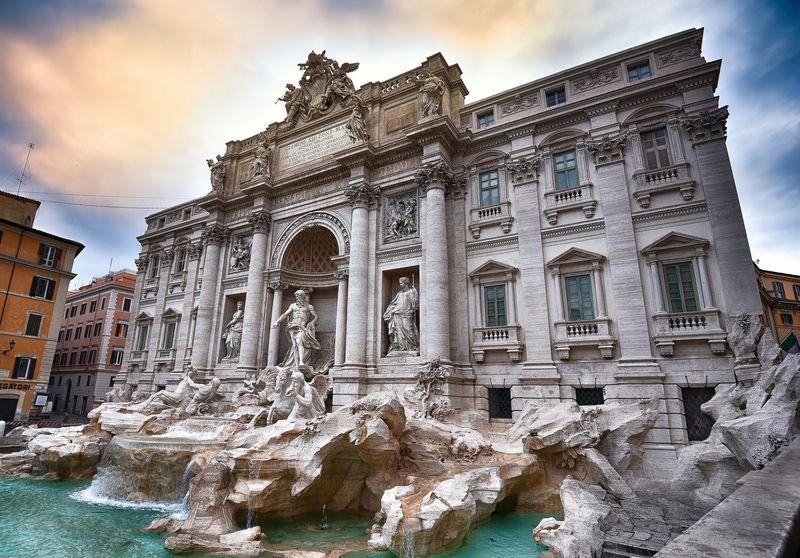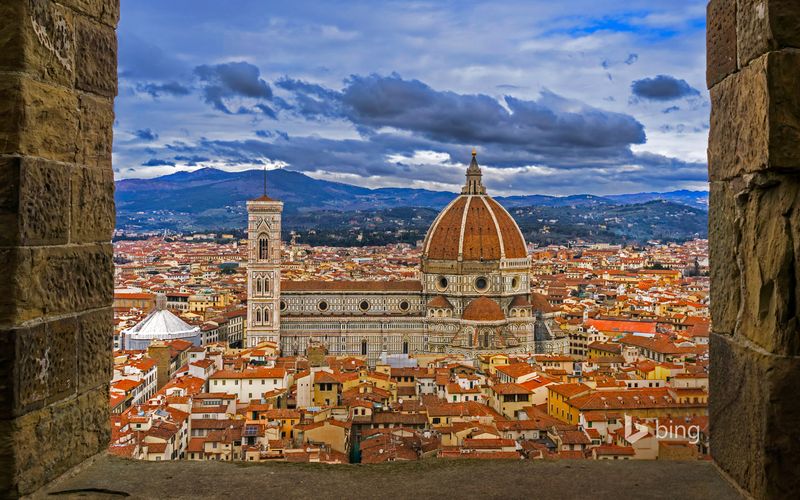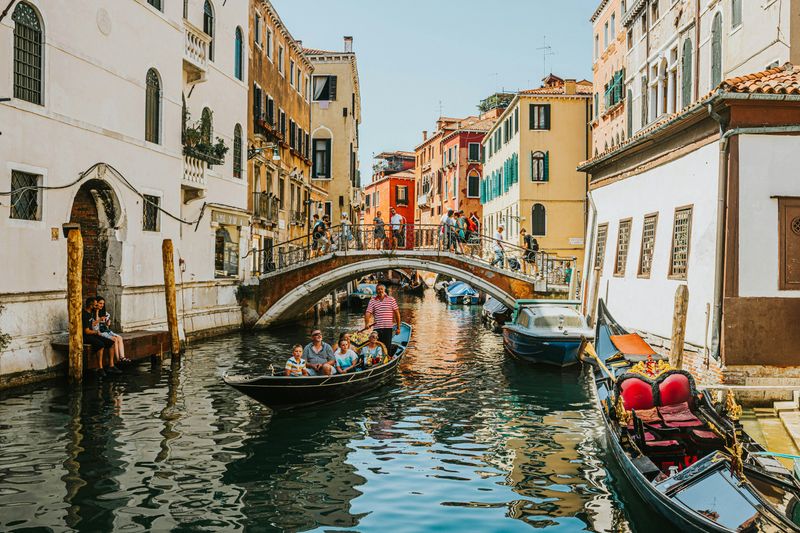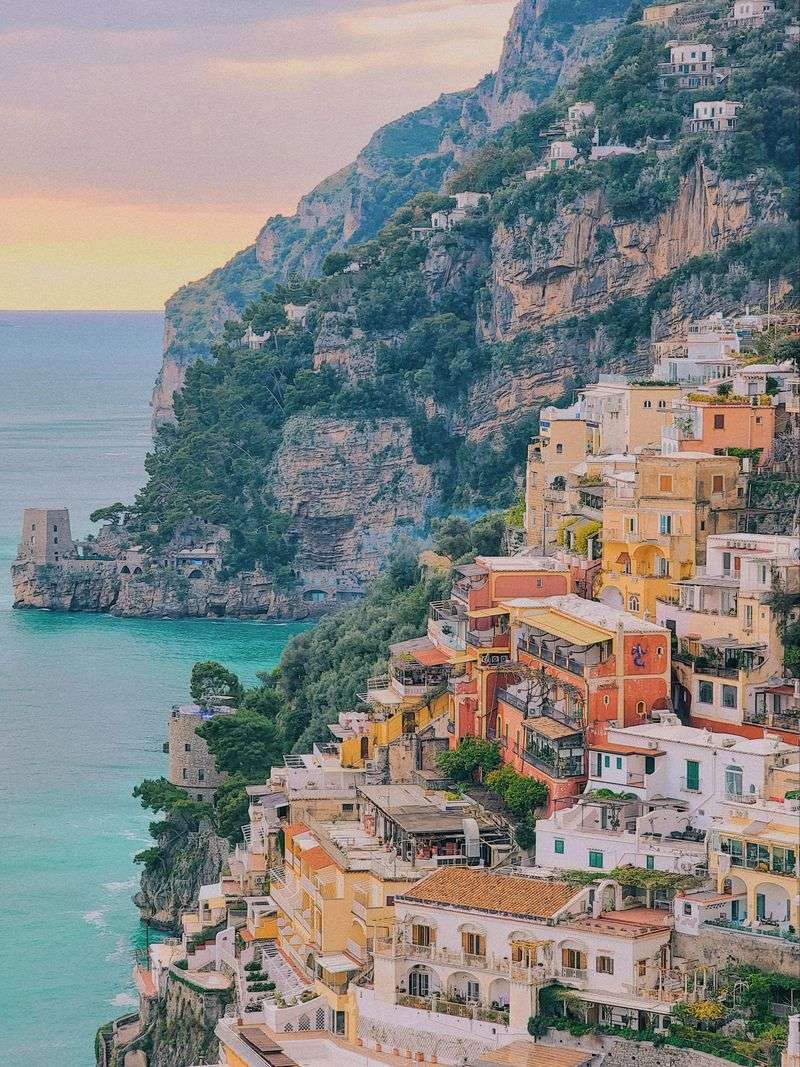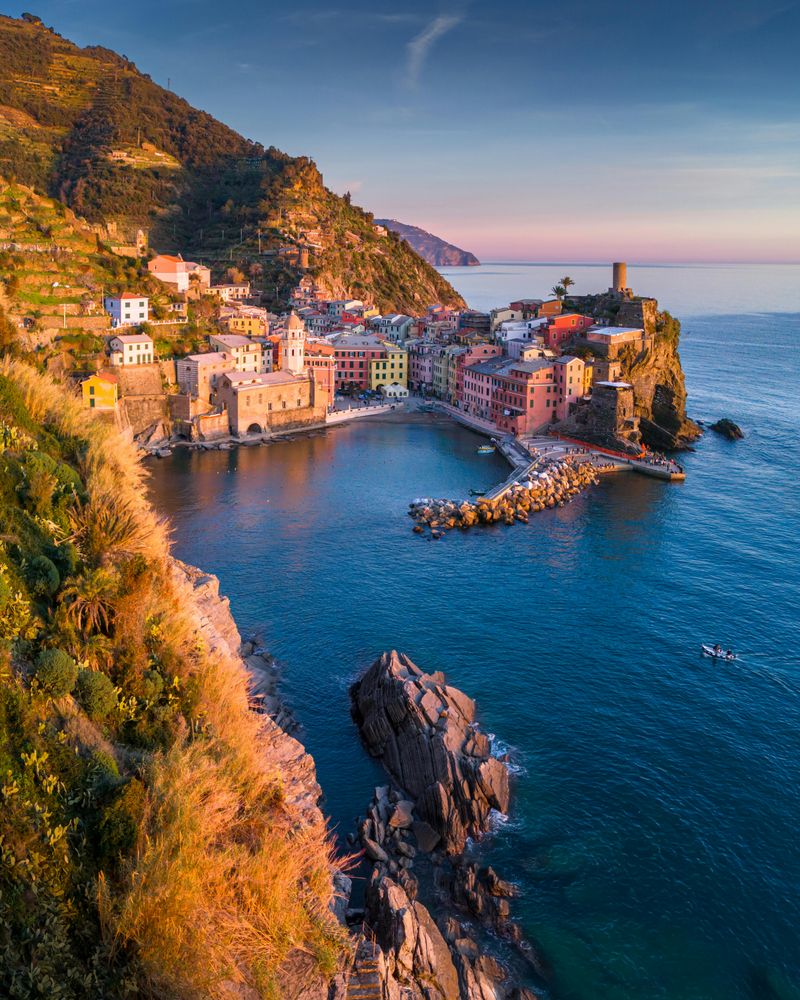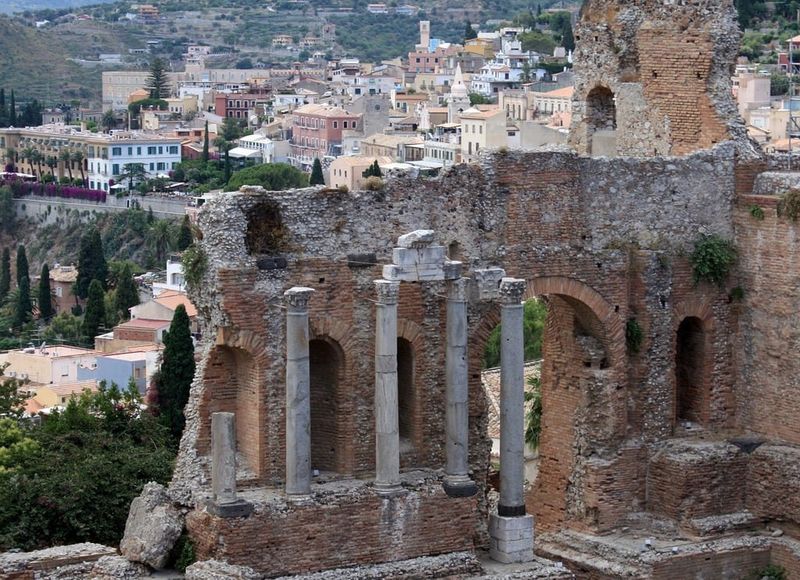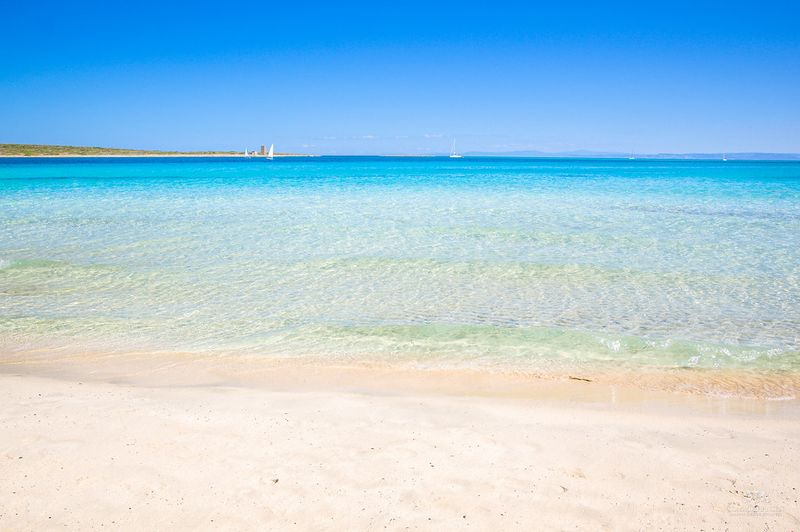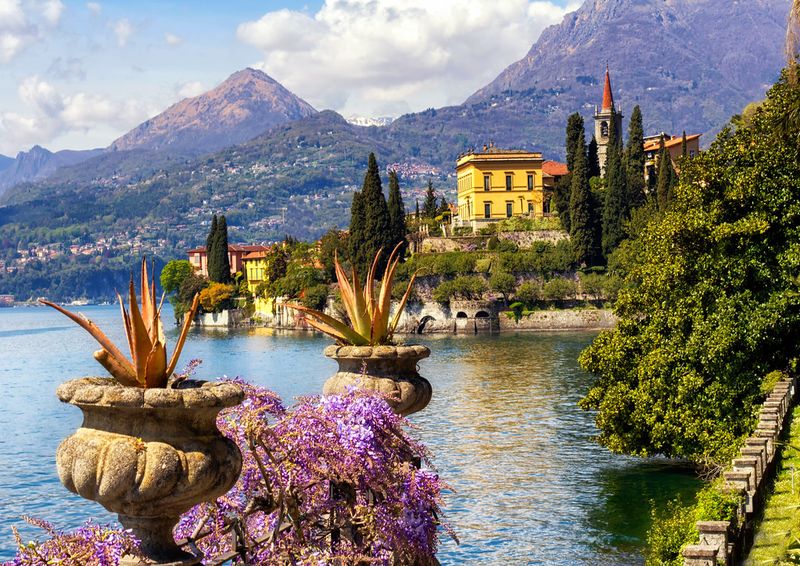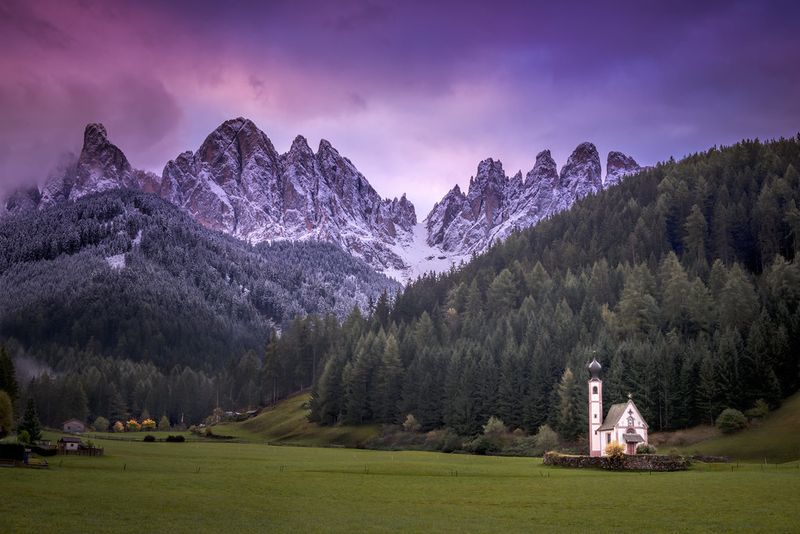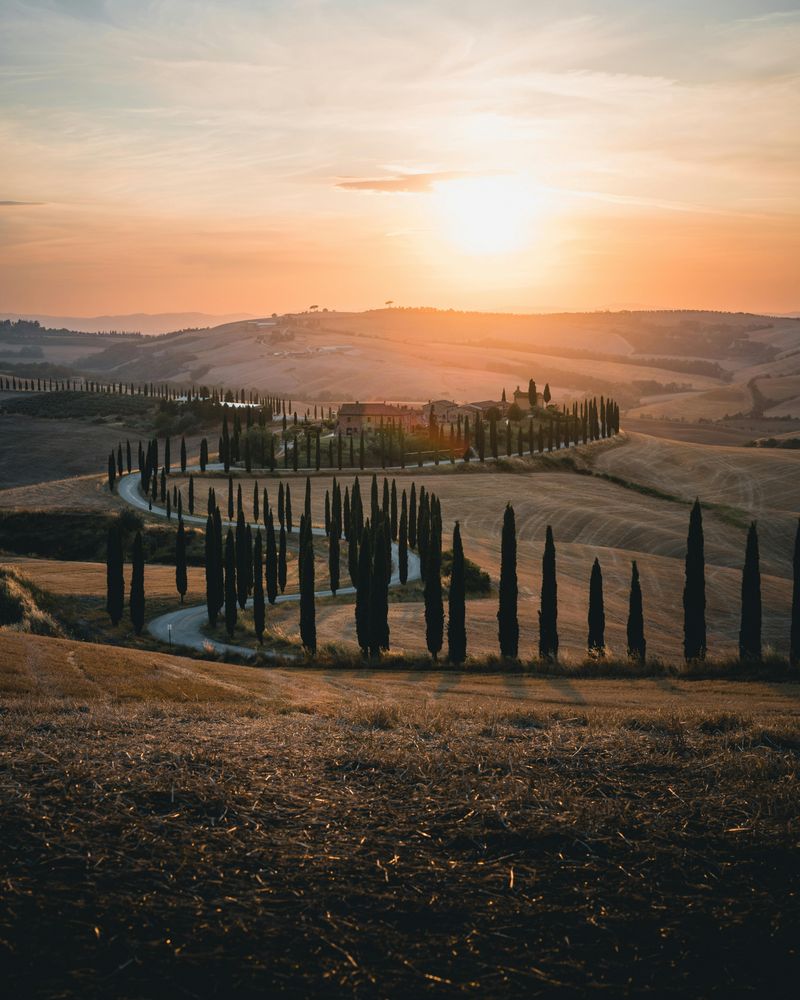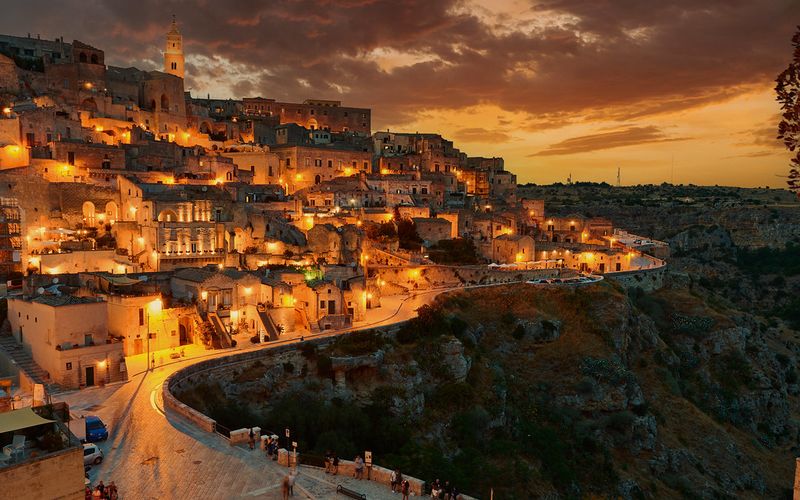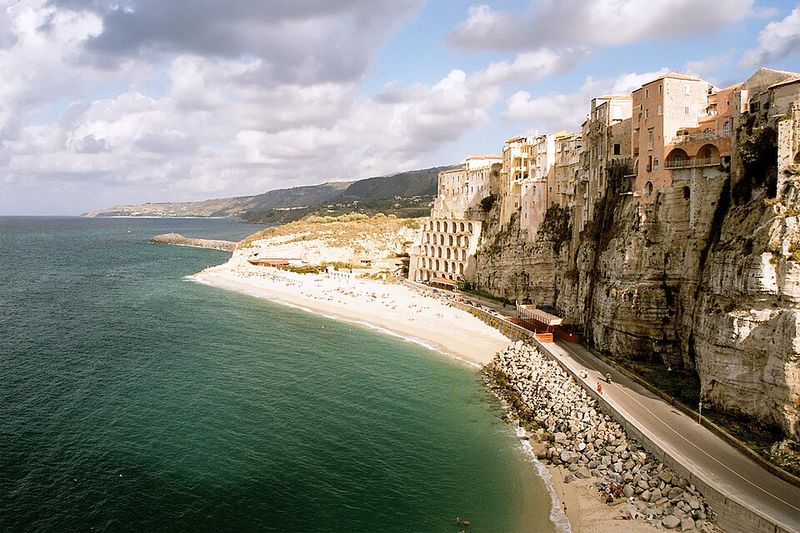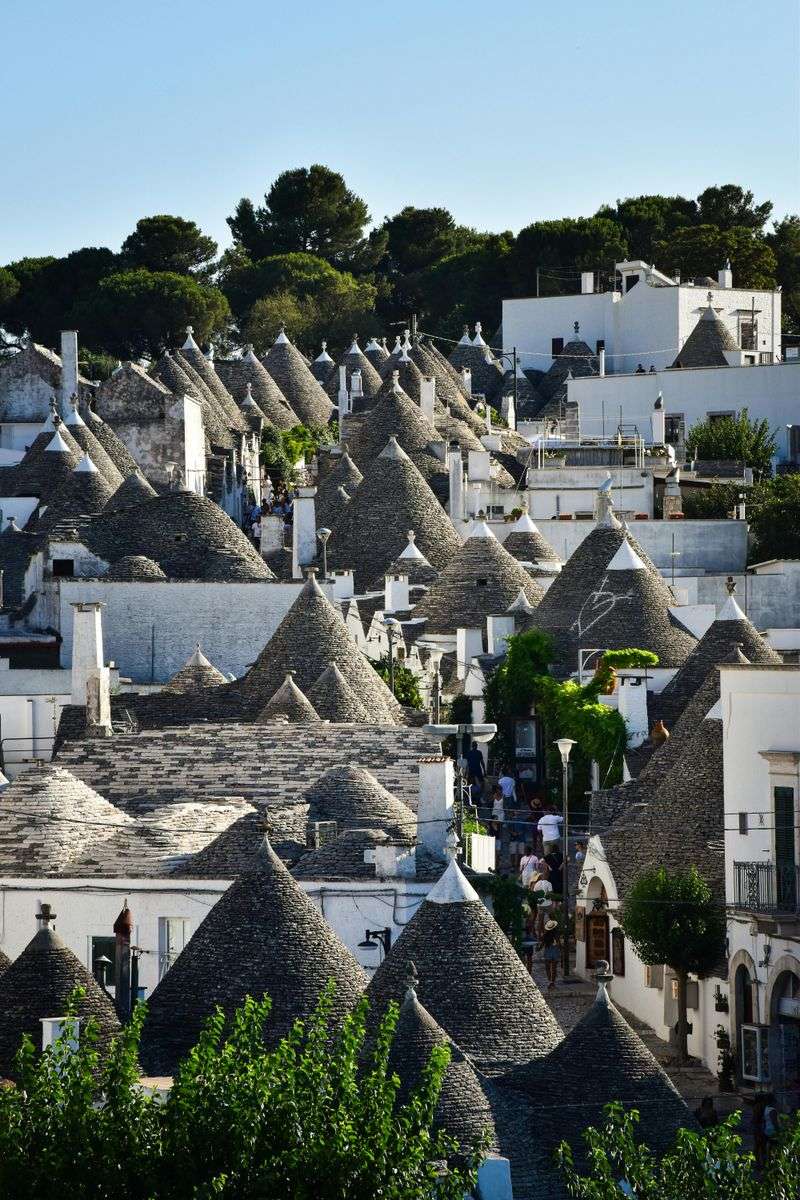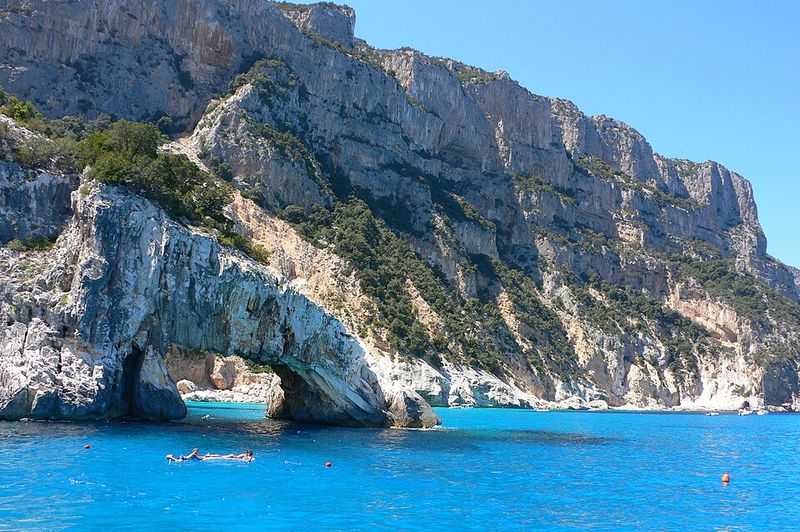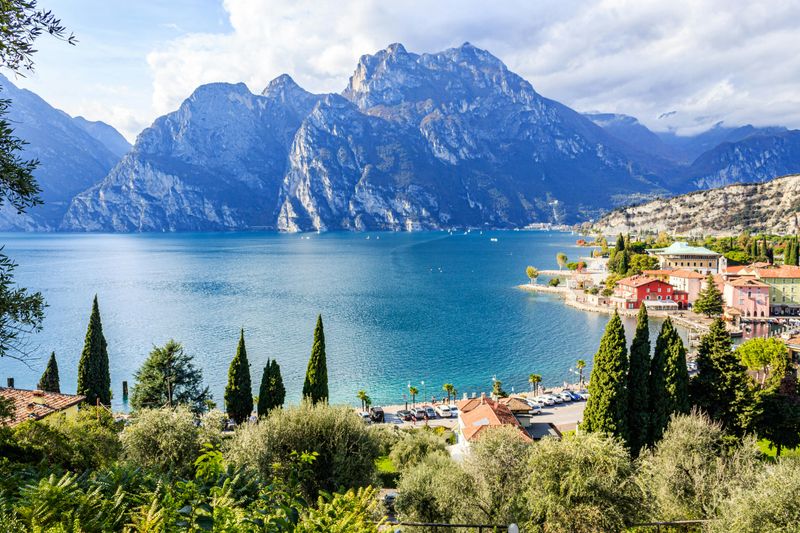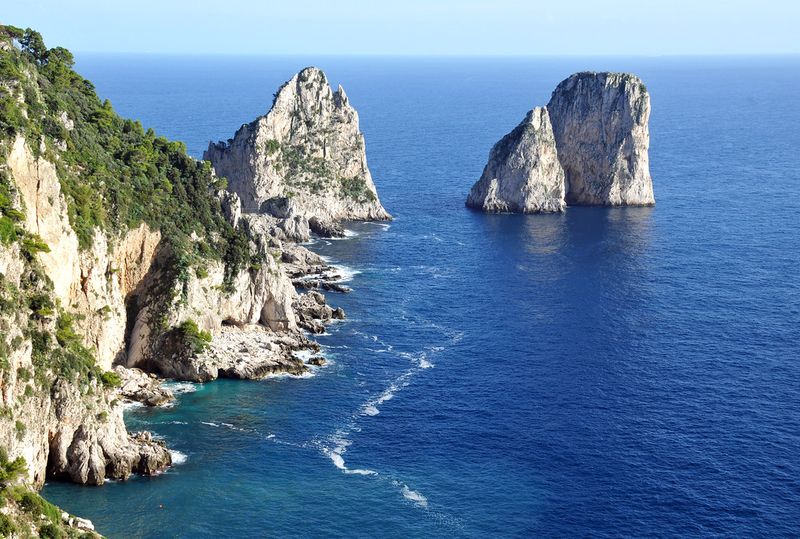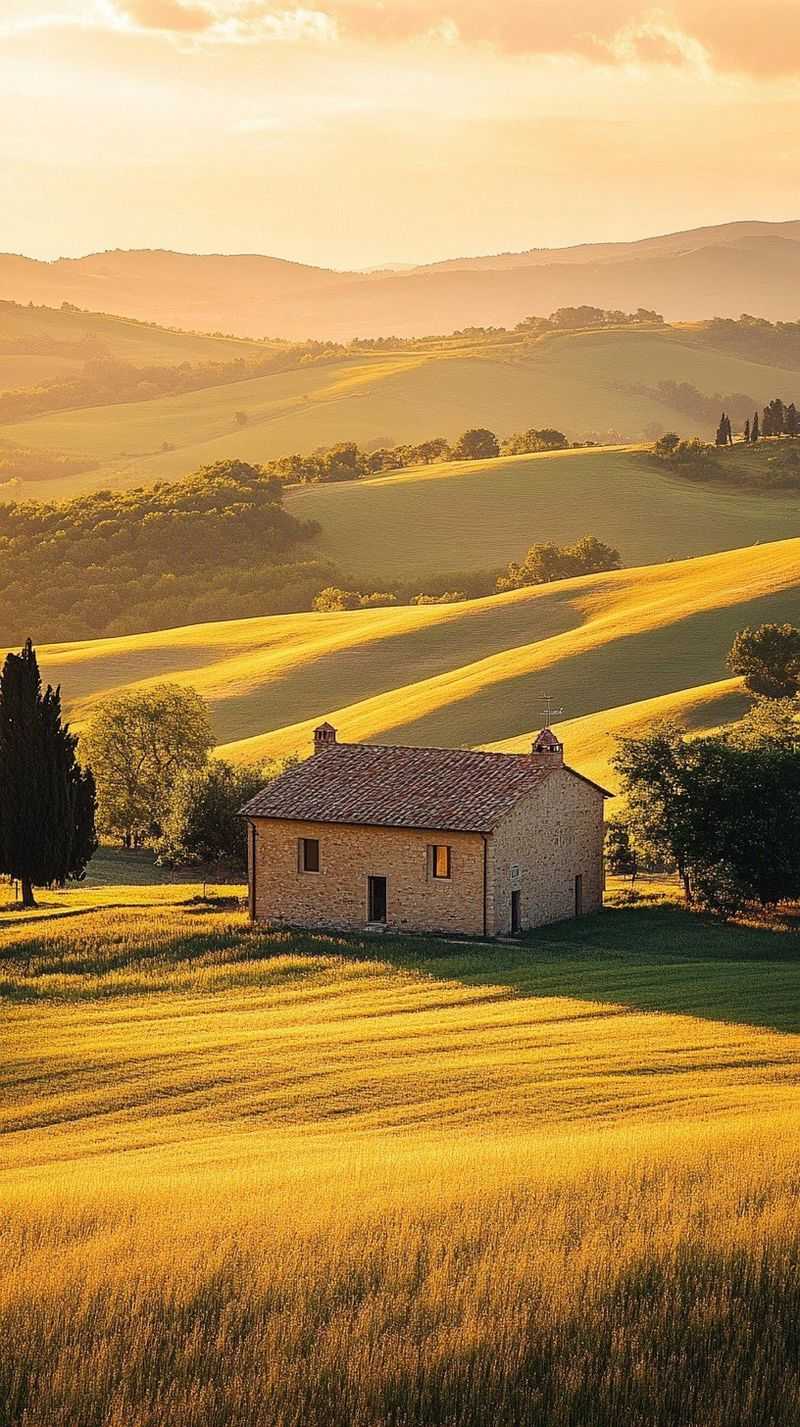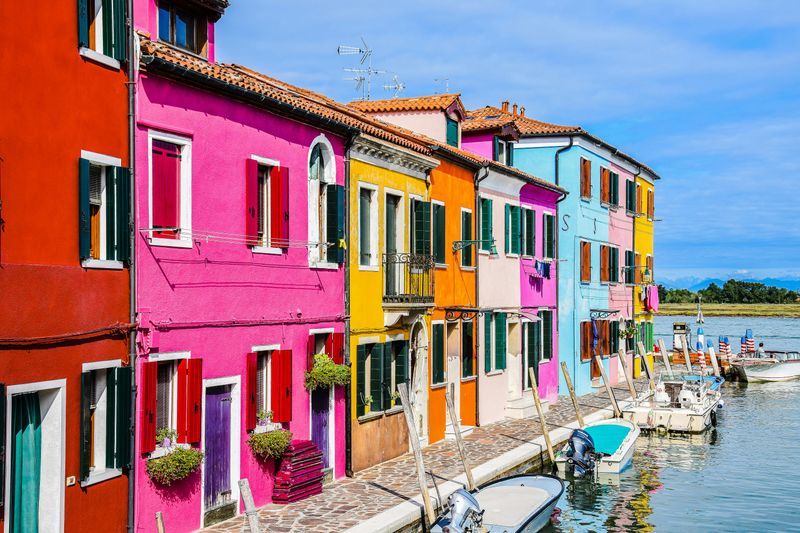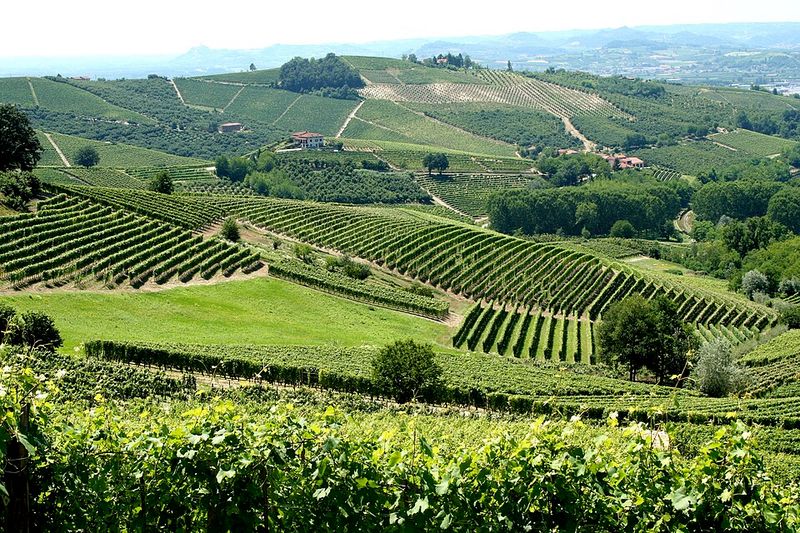Italy has captured the hearts of travelers for centuries with its stunning landscapes, rich history, and unforgettable charm. From ancient cities filled with world-famous landmarks to coastal villages that seem painted by artists, this country offers beauty at every turn. Whether you dream of exploring mountain peaks, relaxing by crystal-clear lakes, or wandering through medieval streets, Italy has something magical waiting for you.
Rome
Walking through Rome feels like stepping into a living museum where every corner tells a story thousands of years old. The Colosseum stands as a massive reminder of gladiator battles, while the Trevi Fountain sparkles with coins tossed by hopeful visitors. Vatican City, nestled within Rome, houses breathtaking art including Michelangelo’s Sistine Chapel ceiling.
Ancient cobblestone streets wind past gelato shops and trattorias serving pasta perfection. The Pantheon’s dome has inspired architects for nearly two millennia. Spanish Steps invite you to sit and people-watch like locals have done for generations.
Rome buzzes with energy day and night, blending history with modern Italian life in ways that feel both grand and surprisingly intimate.
Florence
Florence earned its nickname as the birthplace of the Renaissance, and one glance at Brunelleschi’s magnificent dome confirms why. Masterpieces by Michelangelo, Leonardo da Vinci, and Botticelli fill the Uffizi Gallery, making art lovers feel like kids in a candy store. The Ponte Vecchio bridge, lined with jewelry shops, has spanned the Arno River since medieval times.
Narrow streets open suddenly into grand piazzas where street musicians play and locals gather. Climbing to Piazzale Michelangelo rewards you with sunset views that painters have tried to capture for centuries. Leather markets, artisan workshops, and family-run restaurants preserve traditions passed down through generations.
Florence manages to feel both elegant and welcoming, like a sophisticated friend sharing their favorite secrets.
Venice
Built entirely on water, Venice defies logic and captures imaginations like nowhere else on Earth. Gondolas glide silently through narrow canals while palaces seem to float on their reflections. St. Mark’s Basilica glitters with golden mosaics, and the Doge’s Palace showcases centuries of Venetian power and artistry.
Getting lost in Venice’s maze of bridges and alleyways becomes part of the adventure rather than a problem. Hidden squares reveal neighborhood cafes where locals sip espresso and chat. Murano’s glass-blowing workshops demonstrate skills perfected over hundreds of years.
The city’s car-free streets and water-taxi commutes create a dreamlike atmosphere. Venice feels fragile and eternal at once, a masterpiece humans built in partnership with the sea.
Amalfi Coast
Driving along the Amalfi Coast ranks among the world’s most spectacular road trips, with hairpin turns revealing jaw-dropping views at every curve. Positano’s pastel houses tumble down cliffs like a waterfall frozen in time. Lemon groves perfume the air with citrus sweetness, and terraced gardens cling impossibly to steep hillsides.
Beach clubs nestle into rocky coves where the Mediterranean glows turquoise and inviting. Ravello’s hilltop gardens offer concert venues with backdrops that rival any stage set. Family-run restaurants serve seafood so fresh it was swimming that morning, paired with local wines.
Each village along this coast has its own personality, but all share that magical combination of dramatic landscape and Italian warmth that makes visitors never want to leave.
Cinque Terre
Five villages paint the Ligurian coastline with colors so vibrant they look photoshopped, yet they’re wonderfully real. Monterosso, Vernazza, Corniglia, Manarola, and Riomaggiore each offer distinct charms while sharing that quintessential Italian coastal magic. Hiking trails connect these villages, winding through vineyards and offering views that make your heart skip beats.
Cars can’t navigate these ancient streets, so you’ll walk narrow lanes past locals hanging laundry and cats napping in sunny spots. Fresh pesto originated here, and restaurants serve it with pride alongside catch-of-the-day seafood. Sunset turns the colorful houses golden while fishing boats bob peacefully in tiny harbors.
Cinque Terre feels like discovering a secret that millions somehow share without spoiling its intimate village atmosphere.
Sicily
Sicily serves up a feast for all senses, blending Greek ruins, Arab influences, and volcanic landscapes into one unforgettable island. Mount Etna smokes dramatically in the background while ancient theaters in Taormina still host performances after thousands of years. The Valley of the Temples showcases Greek architecture that rivals anything in Athens.
Palermo’s markets explode with colors, aromas, and vendors calling out in melodic Sicilian dialect. Beaches range from golden sands to dramatic rocky coves where the Mediterranean sparkles in impossible shades of blue. Cannoli and arancini taste better here than anywhere else because recipes haven’t changed in generations.
Sicily feels like Italy’s wild, passionate cousin—bigger, bolder, and beautifully unpredictable, with stories layered like its famous cassata cake.
Sardinia
Sardinia guards some of Europe’s most stunning beaches like precious secrets waiting to be discovered. The Costa Smeralda lives up to its Emerald Coast name with waters so clear you can count fish from the shore. Hidden coves accessible only by boat offer private paradise moments that feel almost too perfect to be real.
Rugged interior mountains contrast beautifully with the coastline, hosting ancient stone villages where traditions survive unchanged for centuries. Local shepherds still make pecorino cheese using methods their great-grandparents taught them. The island’s wild beauty attracts those seeking escape from crowds and connection with nature.
Sardinia offers that rare combination of Mediterranean warmth and untamed wilderness, where luxury resorts and rustic shepherds’ huts coexist peacefully across the island’s diverse landscapes.
Lake Como
Lake Como has been the playground of wealthy Romans since ancient times, and one look at those villa-dotted shores explains why. Alpine peaks frame the Y-shaped lake while elegant gardens cascade down to the water’s edge. Towns like Bellagio and Varenna seem designed specifically for leisurely strolls and lakeside gelato breaks.
Ferry boats connect picturesque villages, turning transportation into sightseeing adventures. Grand hotels preserve old-world glamour, while family-run restaurants serve lake fish and homemade pasta with mountain views. George Clooney’s villa purchase brought modern celebrity attention, but locals have known this area’s magic for generations.
The combination of serene water, dramatic mountains, and Italian sophistication creates an atmosphere that feels both relaxing and inspiring, perfect for romantic getaways or creative retreats.
Dolomites
The Dolomites rise from northern Italy like nature’s cathedral, with limestone spires that glow pink during sunrise and sunset. Hikers discover meadows carpeted with wildflowers in summer, while winter transforms the same trails into world-class ski runs. These UNESCO-listed peaks offer beauty that makes even non-hikers want to lace up boots and explore.
Mountain refuges serve hearty meals with views that belong on postcards rather than restaurant windows. Cable cars whisk visitors to heights where eagles soar and the air tastes crisp and clean. The region blends Italian and Austrian cultures, creating unique traditions, architecture, and cuisine.
Whether you visit for adrenaline-pumping adventures or peaceful mountain contemplation, the Dolomites deliver landscapes so stunning they almost don’t seem real, yet they’re magnificently solid beneath your feet.
Val d’Orcia
Val d’Orcia looks exactly like the Tuscany of your dreams, with rolling hills that seem painted by Renaissance masters. Cypress trees line winding roads like nature’s exclamation points, and stone farmhouses sit perfectly placed in golden fields. This UNESCO World Heritage landscape has inspired artists and photographers for centuries, and cameras still struggle to capture its full beauty.
Medieval hill towns like Pienza and Montalcino crown hilltops, offering wine-tasting and pecorino cheese that tastes like sunshine. Vineyards produce Brunello wine that wine lovers travel continents to sample. Hot springs bubble naturally from the ground at Bagno Vignoni, where Romans once soaked their troubles away.
Val d’Orcia represents Tuscany’s soul—peaceful, timeless, and beautiful in ways that make you understand why people fall hopelessly in love with Italy.
Matera
Matera’s ancient Sassi districts transport visitors back thousands of years to when humans first carved homes into limestone cliffs. These cave dwellings created entire neighborhoods that blend so seamlessly with the ravine that it’s hard to tell where nature ends and human creation begins. Once considered shamefully poor, the Sassi now stand as UNESCO heritage and filming locations for biblical movies.
Wandering these stone streets feels like walking through history itself, with churches carved entirely from rock and houses that stayed cool in summer, warm in winter. Modern restaurants and boutique hotels now occupy beautifully restored caves, offering unique stays you’ll never forget. Sunrise bathes the golden stone in warm light that photographers dream about.
Matera proves that humans and nature can create beauty together when working in harmony rather than opposition.
Tropea
Tropea crowns a limestone cliff above beaches that glow with some of the Mediterranean’s most brilliant turquoise waters. The town’s historic center winds through narrow streets where flowers cascade from balconies and locals chat from windows above. The Santa Maria dell’Isola monastery sits dramatically on its own rocky outcrop, connected to the mainland and impossibly photogenic.
Calabria’s red onions grow sweet here in the coastal climate, and restaurants celebrate them in every dish imaginable. Beach clubs nestle into coves below the cliff, accessible by staircases carved into rock. Sunset paints the old buildings golden while the Tyrrhenian Sea sparkles below.
This southern gem remains less crowded than famous northern destinations, offering authentic Italian coastal life where fishing boats still matter and tourists feel welcomed rather than merely tolerated.
Alberobello
Alberobello looks like a village from a fairy tale, with over 1,500 trulli houses sporting distinctive cone-shaped roofs. These whitewashed limestone dwellings with stacked stone roofs were built without mortar, using ancient techniques that kept interiors surprisingly comfortable. UNESCO recognized this architectural uniqueness, but locals have simply called these structures home for generations.
Walking through the Rione Monti district feels like shrinking into a storybook where gnomes might peek around corners. Many trulli now house shops selling local crafts, wines, and that famous Puglian olive oil. Some offer overnight stays, letting visitors sleep under those magical conical ceilings.
The town proves that practical solutions can become beautiful art when communities develop building styles perfectly suited to their environment, climate, and available materials over centuries of refinement.
Gulf of Orosei
The Gulf of Orosei guards Sardinia’s wildest coastline, where limestone cliffs plunge dramatically into waters that shift from turquoise to deep sapphire. Hidden beaches like Cala Goloritzè and Cala Mariolu remain accessible mainly by boat, preserving their pristine beauty and limiting crowds. Sea caves carved by millennia of waves create grottos where light plays magical tricks on the water.
Hiking trails wind along cliff tops offering views that make you gasp and reach for your camera repeatedly. The Supramonte mountains rise inland, creating a rugged backdrop that feels more wild than typical Mediterranean coastlines. Monk seals occasionally visit these protected waters, adding wildlife magic to the geological wonders.
This stretch of coast reminds visitors that Italy offers not just cultural treasures but also raw natural beauty that rivals anywhere on Earth.
Lake Garda
Lake Garda stretches as Italy’s largest lake, offering different personalities along its varied shores. The northern end feels alpine with mountains diving into deep blue water and windsurfers catching reliable breezes. Southern shores spread gentler, with thermal spas, amusement parks, and beaches that feel almost Mediterranean despite being landlocked.
Towns like Sirmione preserve medieval castles surrounded by water, while Limone’s lemon terraces climb hillsides in photogenic tiers. Lakeside promenades invite evening strolls past gelaterias and restaurants serving lake fish. Ferries connect villages, making car-free exploration easy and scenic.
The lake attracts everyone from families seeking holiday fun to couples wanting romantic escapes, proving that sometimes the best destinations are those offering something wonderful for every type of traveler without losing their authentic Italian character.
Capri
Capri has attracted Roman emperors, Hollywood stars, and honeymooners for thousands of years, and its magic remains potent as ever. The Faraglioni rock formations rise from the sea like nature’s sculptures, while the Blue Grotto glows with ethereal underwater light that seems impossible until you see it yourself. Clifftop paths offer views that justify every superlative ever written about Mediterranean islands.
The Piazzetta serves as the island’s living room where people-watching becomes an art form. Designer boutiques line narrow streets, but the real luxury is the island’s natural beauty and that intoxicating sense of escape. Villa San Michele’s gardens and Augustus Gardens showcase how humans can enhance rather than diminish natural beauty.
Capri proves that some places earn their famous reputations honestly, delivering glamour and beauty in equal, generous measures.
Tuscan Countryside Around Florence
Beyond Florence’s Renaissance walls, the Tuscan countryside unfolds like a masterpiece painted in greens, golds, and earth tones. Hill towns like Fiesole and San Miniato crown hilltops, offering views back toward Florence’s famous dome and forward to endless agricultural beauty. Vineyards producing Chianti Classico stretch across slopes where families have tended grapes for generations.
Country roads wind past stone farmhouses converted into agriturismos where visitors eat farm-to-table meals that define authentic Italian cuisine. Olive groves shimmer silver-green in the breeze, producing oil that locals use as generously as water. Medieval abbeys and Renaissance villas hide in valleys, preserving art and history outside the crowded city.
This countryside reminds travelers that Tuscany’s beauty extends far beyond Florence’s walls, offering peaceful landscapes that fed the Renaissance imagination and still inspire today.
Burano and the Venetian Lagoon Islands
Burano explodes with color in ways that make Venice look monochrome by comparison. Fishermen’s houses painted in rainbow hues line canals, creating scenes so vibrant they look enhanced even in person. Legend says fishermen painted homes in bright colors so they could find their way home through fog, turning practical necessity into art.
Lace-making traditions continue here, with elderly women demonstrating skills that take years to master. Nearby Murano produces world-famous glass, with workshops offering demonstrations that reveal the incredible skill behind each piece. Torcello’s ancient cathedral stands nearly alone on its island, showing where Venetian civilization began before moving to the main islands.
These lagoon islands offer quieter alternatives to Venice’s crowds while showcasing unique traditions and beauty that complement rather than compete with their famous neighbor across the water.
Langhe Hills in Piedmont
Piedmont’s Langhe hills roll gently like a rumpled blanket colored in vineyard greens and autumn golds. This UNESCO-recognized landscape produces Barolo and Barbaresco wines that wine enthusiasts consider among the world’s finest. Medieval castles crown strategic hilltops, reminding visitors that these fertile lands were worth fighting over for centuries.
Hazelnut groves supply Nutella factories, and truffle hunters search forests with trained dogs for the prized white truffles that cost more per pound than gold. Small towns host slow food restaurants where meals last hours and every ingredient tells a story. Autumn fog rolls through valleys at sunrise, creating mystical scenes that photographers chase year after year.
The Langhe represents northern Italy’s quieter beauty—less dramatic than mountains or coast, but deeply satisfying in its pastoral perfection and dedication to preserving food and wine traditions.
